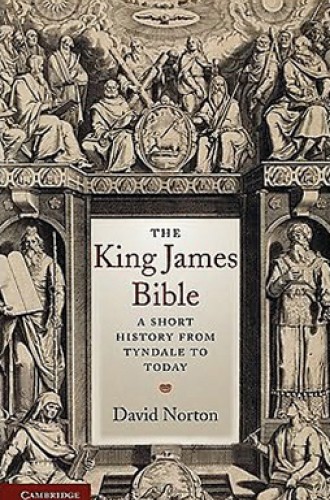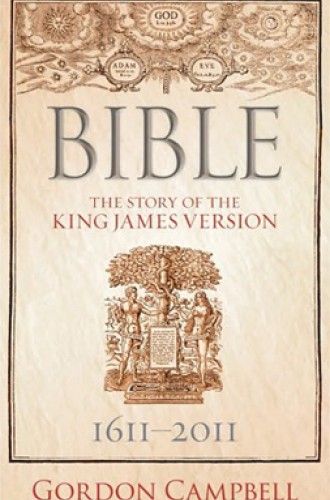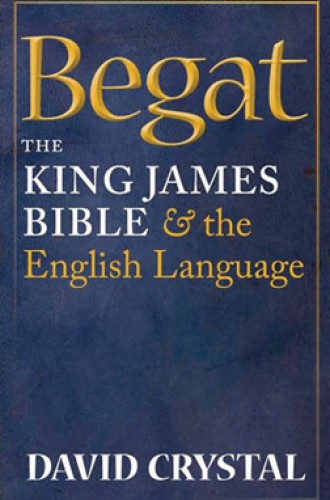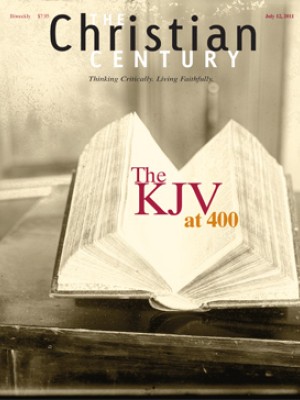KJV at 400
This year marks the 400th anniversary of the publication of the King James Version of the Bible. Why should this matter to readers of the Christian Century? The KJV is, after all, the translation that fundamentalists rallied around in the late 19th and early 20th centuries after the introduction of the Revised Version (1885).
For a majority of mainline Christians, the New Revised Standard Version (NRSV) is preferred for its contemporary scholarship, use of the most recent manuscripts (including those discovered among the Dead Sea Scrolls), removal of archaisms, attention to the differences between genres (typesetting poetry as poetry, presenting the Song of Songs as drama), use of appropriate gender-inclusive language, and its ecumenical focus. Nevertheless, the KJV is the translation that is a building block of our collective cultural heritage. It is the English-language Bible on which all others stand. What other would U.S. presidents lay their right hand upon while swearing the oath of office? None. From Washington to Obama, it has been the KJV.
Read our latest issue or browse back issues.
The anniversary year features conferences, television programs, websites, blogs, videos and traveling exhibits on the KJV. Most notable of the latter is the exhibit of rare biblical treasures and artifacts in the privately owned Green Collection (named for an Oklahoma City family) traveling the U.S. throughout the year. This exhibit went on display on March 31 at the Embassy of the Holy See in Washington, D.C. Sitting beside fragments of the Dead Sea Scrolls, rare Roman papyrus, priceless medieval editions of the Vulgate and a first edition of Foxe's Book of Martyrs is a variety of the first printings of the 1611 KJV. The program notes read: "The King James Bible is more often seen merely as a Protestant enterprise while, in fact, it represented the earliest attempt in English to provide what we may call today 'an interfaith' Bible translation that borrowed from the best that previous translations had to offer."
That's an odd claim, since Catholics had nothing to do with the translation and production of the KJV. Still, it was the most ecumenical option of its day in England. James I called for the new Bible at the Hampton Court Conference in January 1604, seeing it as a means of bringing Puritans and Anglicans together. Some scholars—as well as the producers of the video KJB: The Book That Changed the World—believe that James was motivated by a desire to get the Puritans off his back and also to avoid having to consult endlessly with the Anglican divines on what was good for his church. In other words, he put them together on a sacred task that would leave them to bicker with each other, not him.
Regardless of the king's precise motivations, he made no attempt to include Catholics. The Reformation was at its highest point, the Catholics had their own translation in Rheims beginning in 1582, and the Gunpowder Plot of 1605 convinced all parties that reconciliation was impossible. For six years, the KJV committees of scholars, preachers and poets from both Puritan and Anglican camps worked side-by-side creating what is often called a "masterpiece by committee."
Less than a decade later, the separatist Puritans still carried their Geneva Bibles, with exhaustive and opinionated study notes, to the New World. But within a half century, they too were being won over by their king's attempt to unify English-speaking Protestant Christianity behind the KJV. From about 1670 to 1885 it was the only game in town. And for a little more than 300 years (roughly from 1670 to 1985) the KJV was by far the most popular Bible in the world. It was carried by the British to the American colonies, the Caribbean, India, Australia and coastal Africa. It wasn't until 1986 that the NIV, appealing mostly to evangelicals, many of whom are descended from what was once the KJV-only crowd, replaced it as the world's best seller.
Having grown up as a Christian evangelical, I imbibed the KJV like mother's milk. My Baptist preacher-grandfather used a Scofield Reference Bible for 50 years. We learned to memorize scripture in Sunday school, and it was always in the King's English. To this day I cannot think of John 3:16 or Psalm 23 in any other translation. But later, as a progressive Episcopalian in Vermont, admitting to appreciating the KJV was a bit like saying out loud that your favorite television show is Leave It to Beaver.
The idioms and expressions of its pages are—whether you realize it or not—familiar. This makes the KJV like the characters in Dickens or the speeches of Martin Luther King Jr. (both fans of the KJV). Where would we be without phrases such as:
- eat, drink, and be merry (Luke 12:19)
- the apple of his eye (Deut. 32:10)
- an eye for an eye (Matt. 5:38)
- it came to pass (Gen. 38:27)
- fight the good fight (1 Tim. 6:12)
- fell flat on his face (Num. 22:31)
- the fullness of time (Gal. 4:4 and Eph. 1:10)
- can the leopard change his spots? (Jer. 13:23)
- Am I my brother's keeper? (Gen. 4:9)
In Begat: The King James Bible and the English Language, David Crystal counts 257 idioms that the KJV has contributed to contemporary English. And he doesn't even include some that I might—such as "the Lord is my shepherd"—because his list includes only those that can be easily used in nonreligious contexts.
To be fair, several of these memorable quotations originated with William Tyndale's translations 80 years earlier. Throughout his lively and accessible The King James Bible: A Short History from Tyndale to Today, David Norton cleverly and helpfully refers to Tyndale's work as "the first draft" of the KJV. That it was. And kudos to the KJV translation committee that was wise enough to retain what was good in Tyndale.
Other phrases from the KJV have explained subtle life lessons to us over and over again in ways that are irreplaceable. It's not necessarily that these expressions are better than those in other Bible translations, but that they have formed the minds and hearts of more English speakers than any other translation. For example:
- God's care for us: "The Lord is my shepherd" (Ps. 23:1)
- Freedom from slavery: "Let my people go" (Exod. 5:1)
- A life wasted in worries over unimportant things: "vanity of vanities" (Eccles. 1:2)
- A self-righteous person: "holier than thou" (Isa. 65:5)
- Work that you adore: "a labor of love" (1 Thess. 1:3)
- A metaphor for being good in the world: "the salt of the earth" (Matt. 5:13)
- A metaphor against in-fighting: "A house divided against itself shall not stand" (Matt. 12:25)
- Our relationship to truth: "We see through a glass, darkly" (1 Cor. 13:12)
- What we say when a politician's dirty secrets are revealed: "How are the mighty fallen" (2 Sam.l 1:27)
- A really close call: "With the skin of my teeth" (Job 19:20).
Even obscure, antiquated words and phrases such as behold, inasmuch, wherefore and thence continue to hold appeal. For one thing, those Jacobean adverbs and pronouns are repeated in other classics of English language and literature, from Melville and Faulkner to Winnie-the-Pooh. I recall A. A. Milne's quirky use of these Jacobean charms, as when Eeyore considers the meaning of his life: "Sometimes he thought sadly to himself, 'Why?' and sometimes he thought, 'Wherefore?' and sometimes he thought 'Inasmuch as which?'—and sometimes he didn't quite know what he was thinking about."
Like the author of Pooh, the translators of the KJV sometimes chose language that was a bit odd and old by the standards of their own day. They didn't always aim for what we might call "contemporary English."
Norton examined the libraries possessed by the KJV translators and discovered that almost to a man they were first and foremost Latin speakers and writers. While at work on what would become the world's greatest English Bible they remained great admirers of the Latin of Jerome. For a variety of reasons—in homage to the Vulgate, as an act of solemnity, because many of them were also orators and poets—accessibility wasn't the KJV translators' only intention. There are reasons why the language of the KJV feels outdated to us today, and one of them is that portions of it sounded ancient even in 1611. It even looked classic, using as it did a gothic typeface, unseen in Bibles today, in contrast to the easy-to-read roman type introduced 60 years earlier by the Geneva.
In stark contrast to such an approach, many Bible publishers today use language that's made to read like a popular novel in an attempt to reach people who feel that what the Bible has to say is already alien to their experience. There isn't much evidence that these strategies have worked to find more readers, however. (One notable exception was the publication of the Living Bible, paraphrased—not translated—by Kenneth N. Taylor for his children as he rode the train to and from his job at Moody Press in Chicago. It was first published in 1971 and amazingly became the best-selling book—not just best-selling Bible or religious book—in the U.S. in both 1972 and 1973.) Even with dozens of contemporary English translations available, the average adult does not know the Bible any better today than was the case 150 years ago.
Let's dispel one key misnomer surrounding the KJV that remains to this day: its nickname, the "Authorized Version"—as if there were only one. The first version to be authorized by an English sovereign was the Great Bible published for King Henry VIII in 1539. It was based mostly on the work of Tyndale, who only three years before had been burned at the stake for his efforts. The second was the Bishop's Bible, authorized by Henry VIII's daughter, Elizabeth I, in 1568. It was the latter that James I would instruct his translators to use as the default wording for the KJV.
English monarchs still hold their greatest textual achievement in high esteem, as they should. As Gordon Campbell points out in Bible: The Story of the King James Version 1611–2011, England's current monarch, Elizabeth II, sent a King James Bible to every child born in the realm in 1953, the year of her coronation. This year, Prince Charles II drew England's attention to the KJV in his role as patron of the King James Bible Trust, a series of exhibits, celebrations, educational events and lectures throughout the UK.
Clearly the KJV does not enjoy the popularity it once had. The New King James (NKJV) was first published in 1982 and aimed to update the grammar and vocabulary of the classic while retaining its literary beauty. Even the Gideons usually hand out NKJVs these days.
But in order to understand some of the key figures, events and speeches of the last few hundred years, one needs to know the old standard. To take just one example, why would Abraham Lincoln begin the Gettysburg Address with the phrase, "Four score and seven years ago . . ."? Surely he knew that Americans didn't talk that way in 1863. (They did not in 1611 either.) Lincoln was speaking to a people divided by a civil war—but one who still shared a Bible.
When you read the KJV, you hear echoes of the speeches of Lincoln and King, the cadences of Huck Finn and Ishmael. You may find yourself writing in the margins and memorizing some of the great phrases and verses that earlier generations of Americans once did. Your cup may, for a time, "runneth over" rather than "overflow" (Ps. 23:5).









